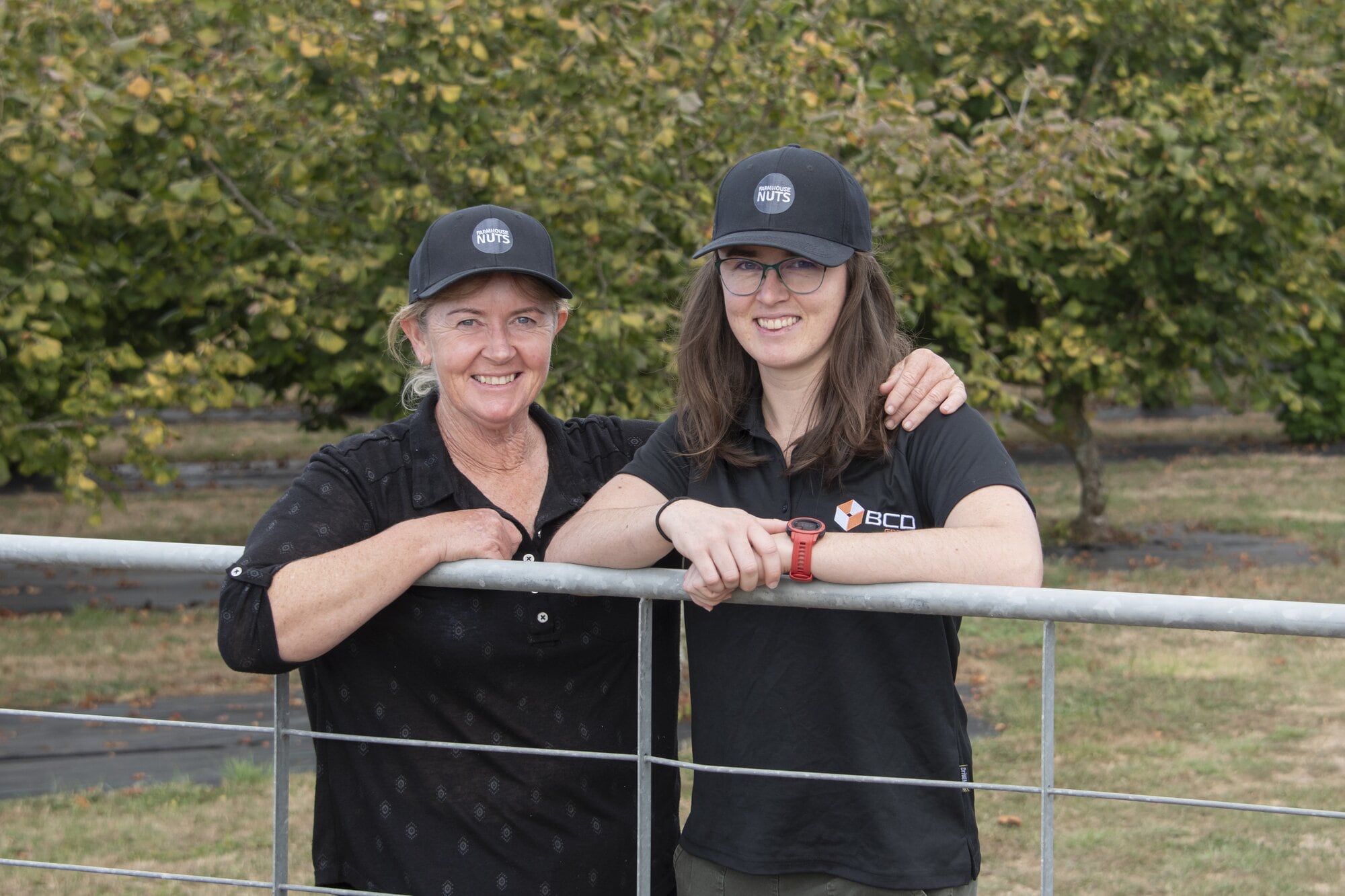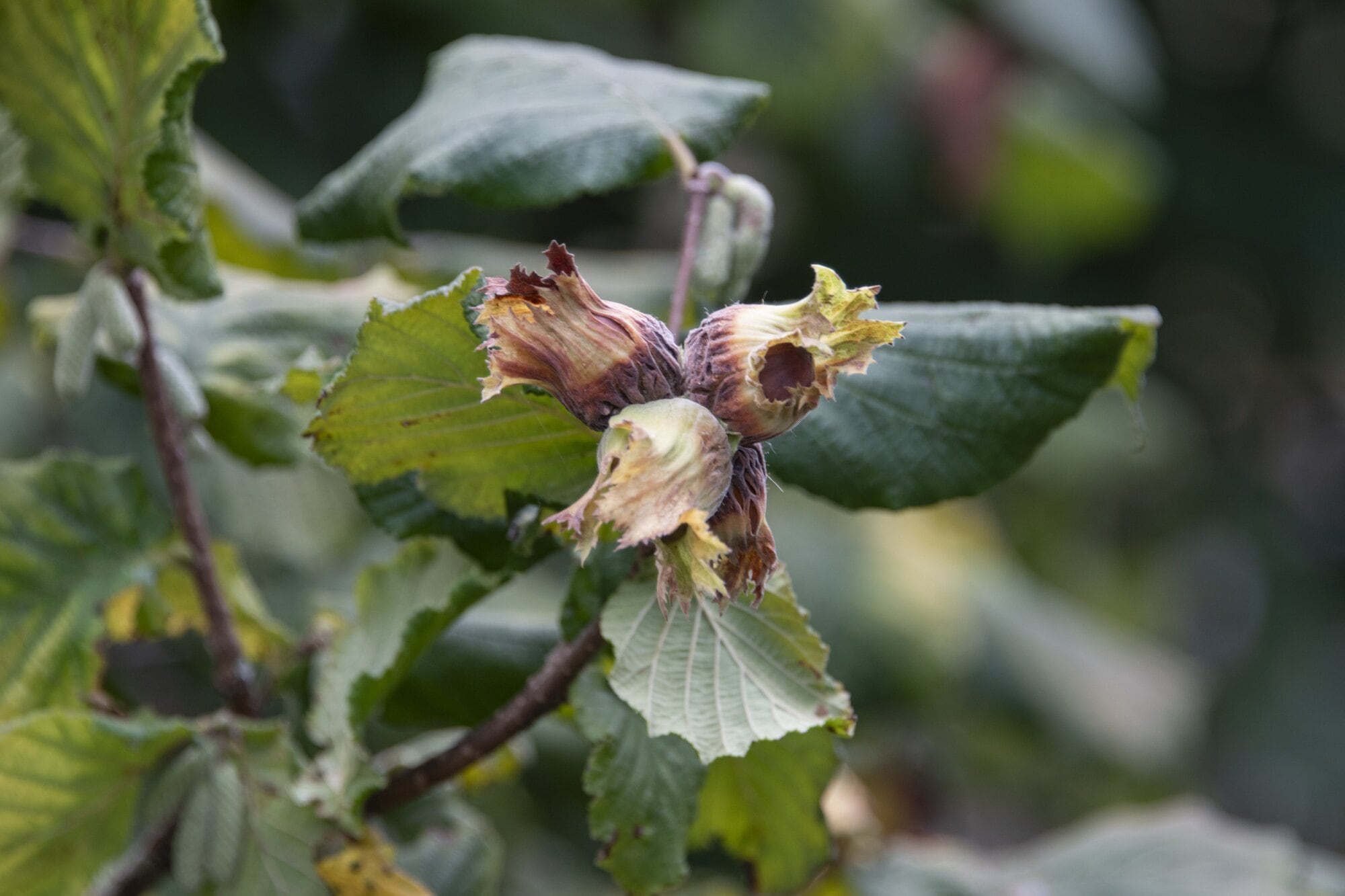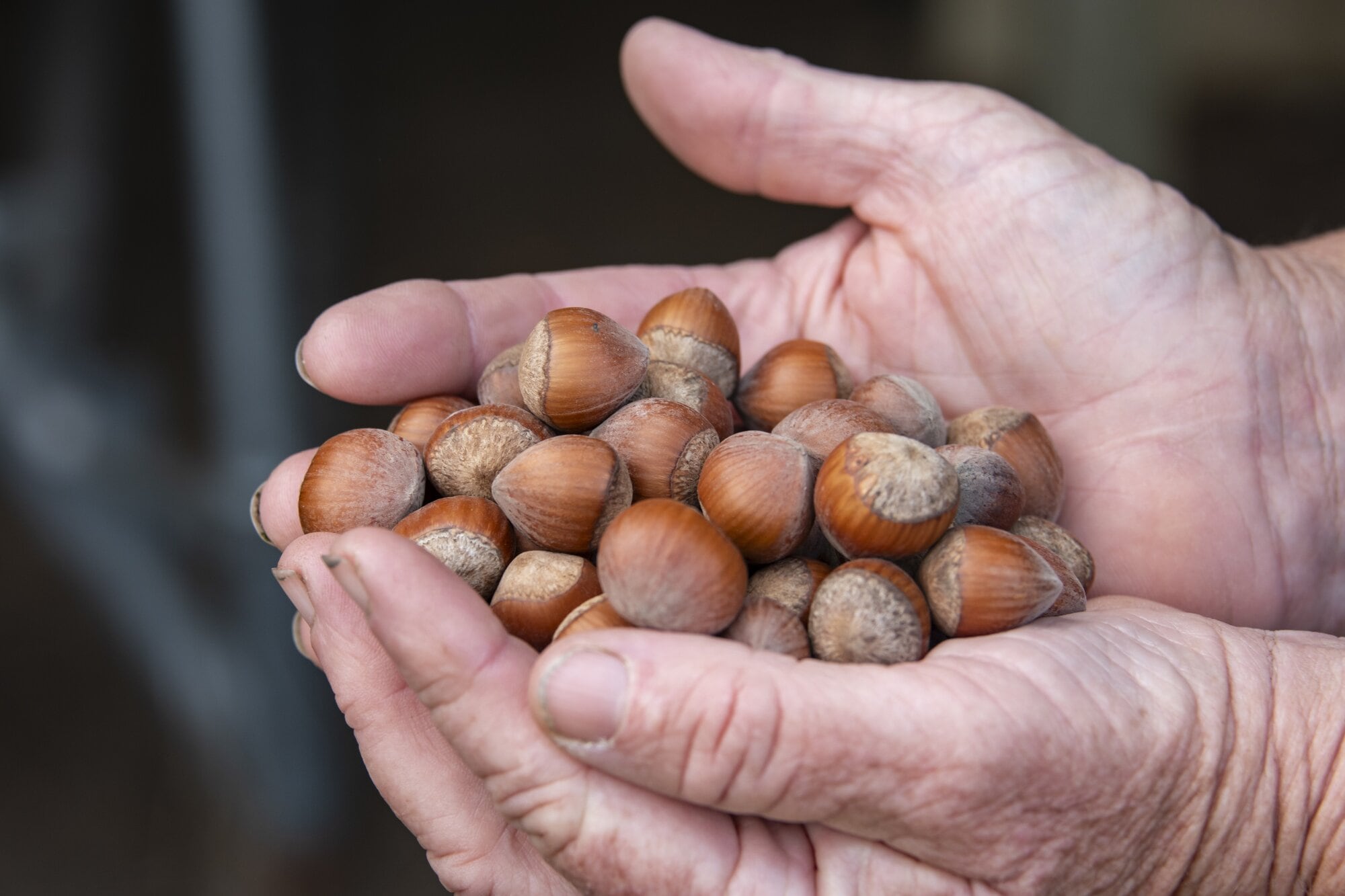In 2018, Waikato farmer Raewyn Scott and her family enjoyed the first hazelnuts after a patient five-year wait for the trees they planted in 2013 to start producing.
Further planting in 2015, 2019, and 2024 has enabled Raewyn to expand the range of hazelnut products made in her commercial kitchen.
Raewyn and her husband Allan bought 25 hectares of her family farm in 2008 and raised their two children in the same house Raewyn lived in as a child.

Hazelnut grower Raewyn Scott, left, and her daughter Nicole. Photo / Catherine Fry
Raewyn ran a small beef operation but felt they needed to diversify. Following some research, hazelnuts seemed to fit the bill.
“They can handle wet feet and frosts, and we’ve noticed they handle the drier conditions around harvest time.”
While Raewyn does the day-to-day farm work, she says she couldn’t do any of it without help from the family who all muck in when it’s busy on the farm.
A five-year wait
The first 1400 trees were planted in 2013. During the first five years, the hazelnut trees were fed seaweed, and the orchard was constantly mowed using a mulching mower.
“When the first nuts came, we were all really excited, so more trees were planted.”
There are now 2500 trees planted over four hectares.
The 2020 Covid-19 lockdown coincided with harvest time, so the family all stayed home and pitched in.

Harvesting the nuts with a commercial vacuum harvester. Photo / Catherine Fry
A decision was made in 2019 to start the process of certifying the organic orchard. The orchard became fully certified organic with BioGro in February 2022 along with food safety certification.
Working within the organic guidelines, weedmat was laid under some trees as a trial to help control grass and weed growth. This has reduced the amount of mowing required and has helped with harvesting. Prolific sucker growth is still controlled with regular trimming.
The hazelnut calendar
Seaweed is fed in granular form in spring along the driplines of the trees.
Summer is spent keeping on top of the mowing and keeping the orchard floor clean and ready for harvest.
In the autumn, March to April, the nuts start falling to the ground and are picked up using a small commercial vacuum. Several passes are required over different days to capture all the nuts.
Winter is important as that is when the trees are pollinated, which is naturally carried out by the wind. Raewyn has six different pollinator varieties of hazelnut in the orchard which release at different times to ensure there will be a harvest. The main variety, White Heart, is an attractive table nut.

Hazelnuts almost ready to fall to the ground. Photo / Catherine Fry
Pest control is year-round with DoC traps set for rats, stoats and mice. Rabbits damage young trees and Raewyn is quite happy to see the neighbour’s cat patrolling her orchard.
“I keep an eye out for Green Shield Veggie Bugs [green stink bugs] and I kill them manually.”
Raewyn sorts, cracks and roasts the nuts when they are needed, so that she is always able to use fresh nuts to sell and make products.
“We sell whole roasted nuts, raw nut pieces, nut butter and more recently, cold pressed hazelnut oil, which can be used on salads, and we’ve found is lovely for skin and hair.”
Farmhouse Nuts attend the weekly Cambridge Farmer’s Market.



0 comments
Leave a Comment
You must be logged in to make a comment.